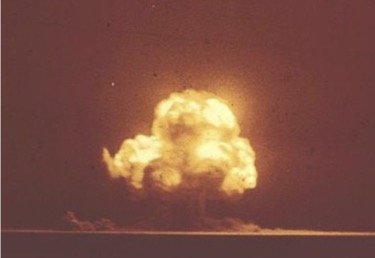RECA and the Tularosa Downwinders
By Bryan Stacy
The Radiation Exposure Compensation Act (“RECA”) was passed in 1990 to provide compensation for those who were affected by or participated in nuclear weapons testing and individuals who were exposed to high levels of radiation as uranium miners. It is scheduled to sunset in July 2022, exactly 77 years after the first test of a nuclear weapon deep in the desert of New Mexico. There are three categories of affected individuals that may qualify for RECA compensation: (1) onsite participants in weapons testing; (2) uranium miners; and (3) downwinders. To qualify as a downwinder for purposes of RECA, a person must have been present “in one of the specified areas near the Nevada Test Site during a period of atmospheric atomic weapons testing and developed one of the types of cancers specified in the statute.” Over 37,000 claimants have received over $2.1 billion in payouts since the act’s inception 32 years ago. Notably missing from this group are the Tularosa Downwinders, a group of southern New Mexicans who continue to suffer health defects as a result of the first ever nuclear weapon test just north of White Sands Missile Range.
Nicknamed “Trinity,” the first detonation of a nuclear weapon could be seen from more than 160 miles away, and its cloud of contaminated soil and debris casted a fallout that stretched about 250 miles long and 200 miles wide. The explosion exerted over 20 kilotons of force. What was viewed at the time as a revolutionary accomplishment for the art of warfare, actually caused a lifetime of pain and frustration for some of the New Mexicans who lived in the rural towns near the Trinity Site. Early on a July morning in 1945, folks living in the towns surrounding the Trinity Test site were startled awake by a loud noise and a bright flash.
The people of New Mexico were given no advance warning of the Trinity Test, as this was a top-secret government mission, nor did any evacuations take place. Following widespread public concern over the massive explosion, the government did not release any information about what truly happened until after the atomic bomb had been used as a weapon in Japan. As a result, the people of the Tularosa Basin had no idea they may have been exposed to life-threatening radioactive contamination. In the years following the test, thousands of New Mexicans began developing cancers and other diseases that were directly tied to the fallout from the Trinity Test. Doctors noted an increase in infant mortality rates, and found that the rate of infant mortality in New Mexico was 56% higher in 1945 than previous years. People who were children at the time of the test began developing leukemia later in life, and locals seemed to believe this was a direct result of the fallout from the Trinity Test.
The Tularosa Downwinders have been trying for over 75 years now to get justice for what they have had to deal with for their entire lives. Claimants need that compensation to pay for health-care costs, and to generally reduce the financial burden of being a victim of a nuclear weapons test. The Tularosa Downwinders group has been around since 2005, and devotes its energy to lobbying state and local leaders to extend RECA benefits to those affected by the Trinity Test. Click here to read some of their stories and their pleas to government officials.
Like many other environmental justice issues, the group desperately wants government recognition. They’ve been putting pressure on elected officials and telling their stories to anyone that will listen to finally hold the government accountable for secretly exposing them to dangerous levels of radioactive contamination. Justice requires the compensation of these folks under RECA, the one federal law enacted entirely to compensate those affected by nuclear weapons tests. Though Senators Heinrich and Lujan have introduced legislation designed to strengthen and expand RECA to folks who were downwind of the Trinity Test, there is no guarantee that this legislation will pass. As a result, New Mexico downwinders are likely to be forgotten or ignored by the federal government, continuing the pattern of national leaders talking big but acting small on issues of environmental justice.
It does seem contrary to the purpose of the law to exclude New Mexico downwinders from being eligible for compensation under the act, but it speaks volumes to the ongoing battle of environmental justice for nuclear activities across New Mexico. It is an issue of environmental justice alone that people of color disproportionately suffered the consequences of the blast, but this issue is exacerbated by the fact that many locals were excluded from receiving compensation for their injuries under RECA. There is much to be said about the morality and politics surrounding nuclear warfare, as well as the feasibility of nuclear energy as a “renewable” source. However, it seems as though little attention is paid to the folks who suffer the consequences of our militant extravaganzas and our grazing of natural resources. The Tularosa Downwinders provide a perfect example to lawmakers as to why their environmental rectification efforts need to be as inclusive as possible to avoid further injustice against communities of color.

